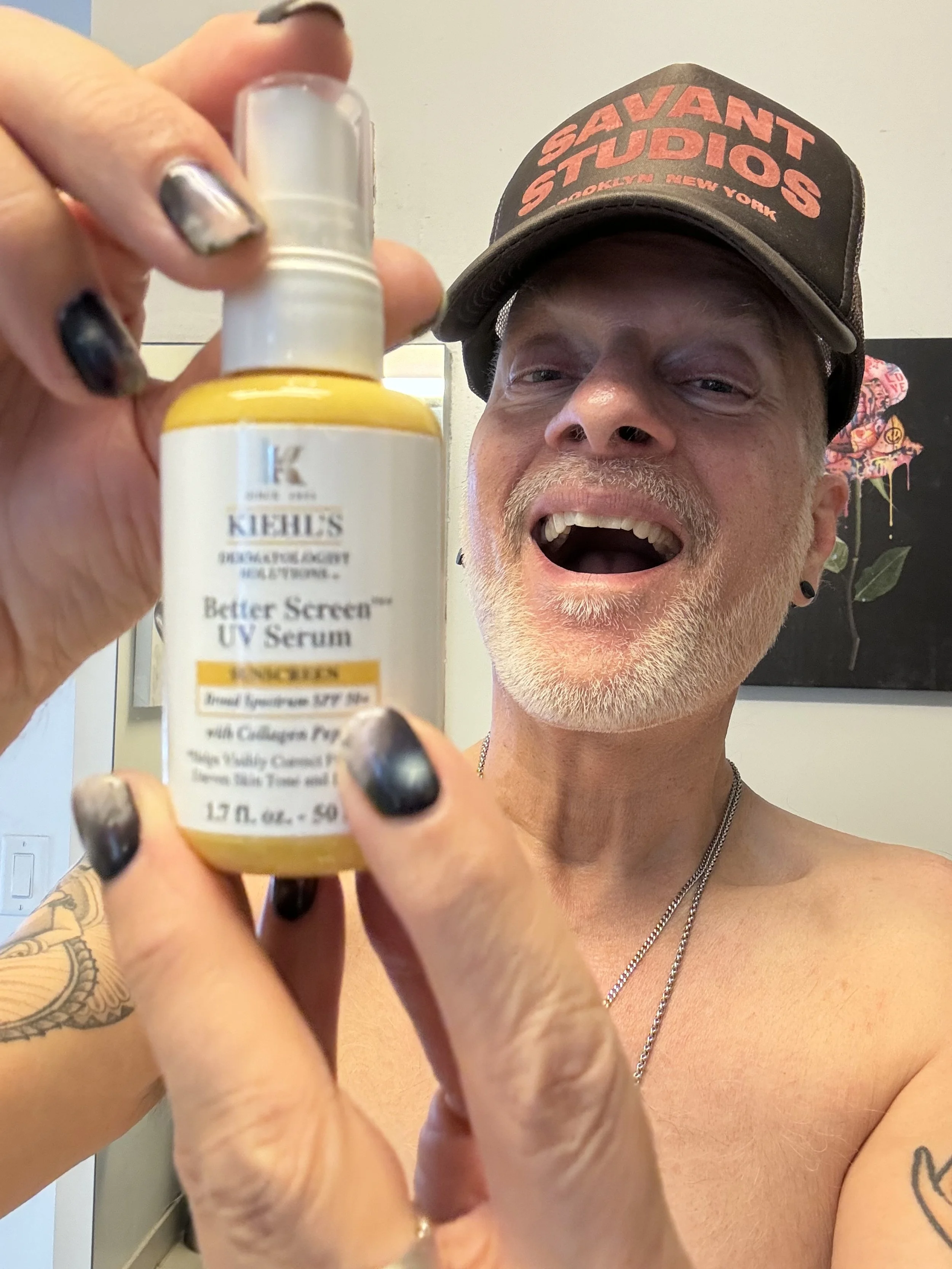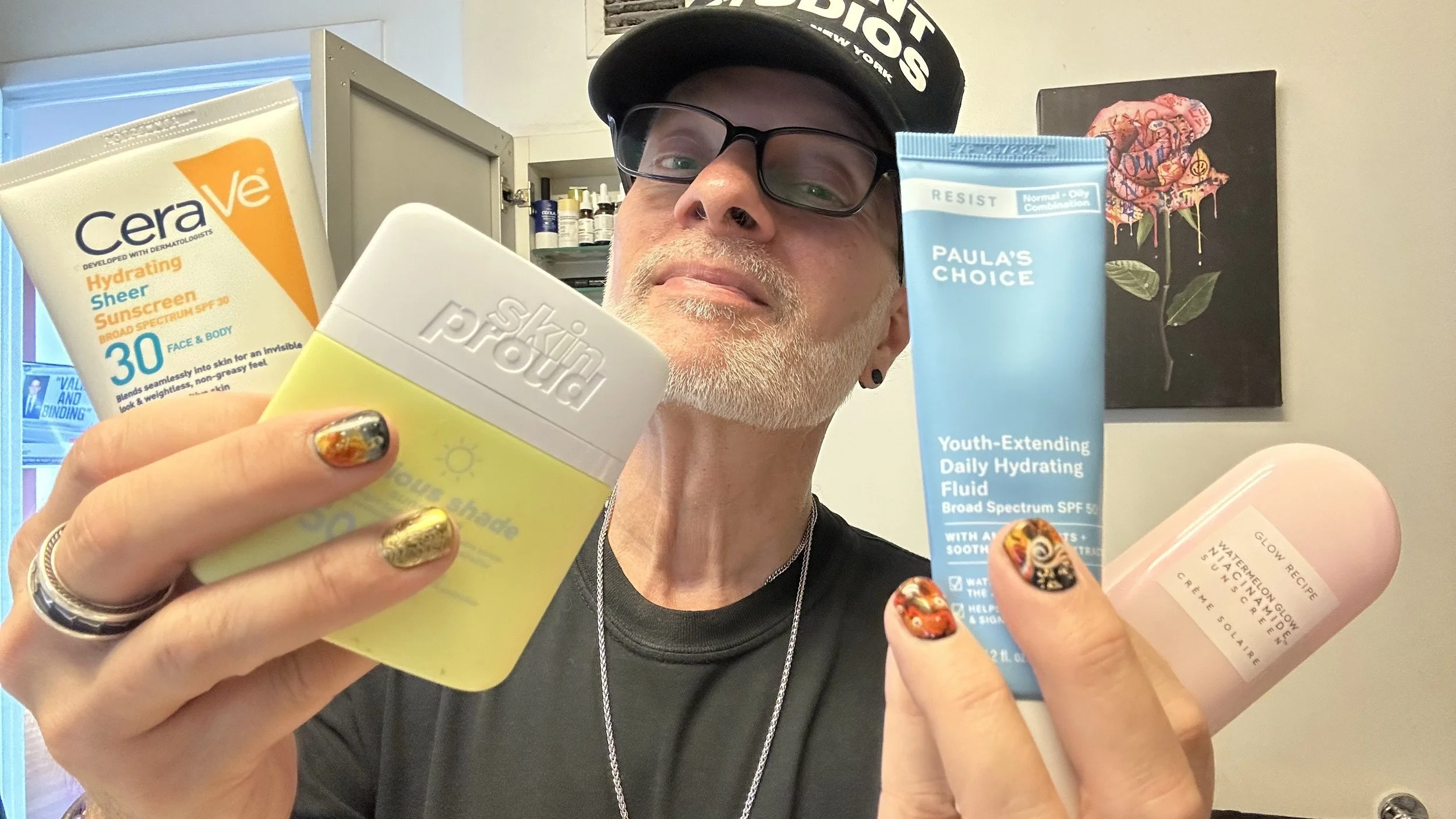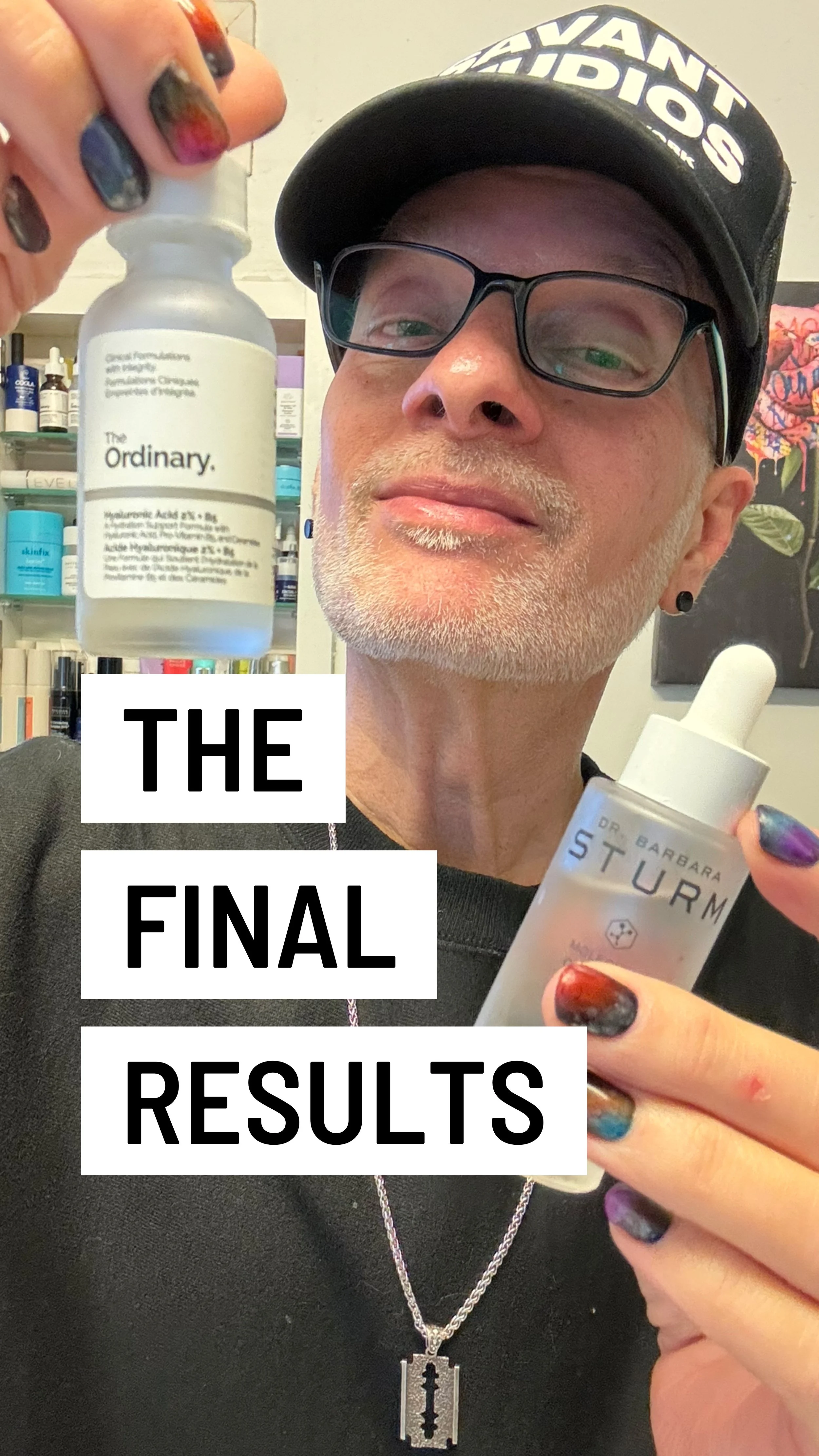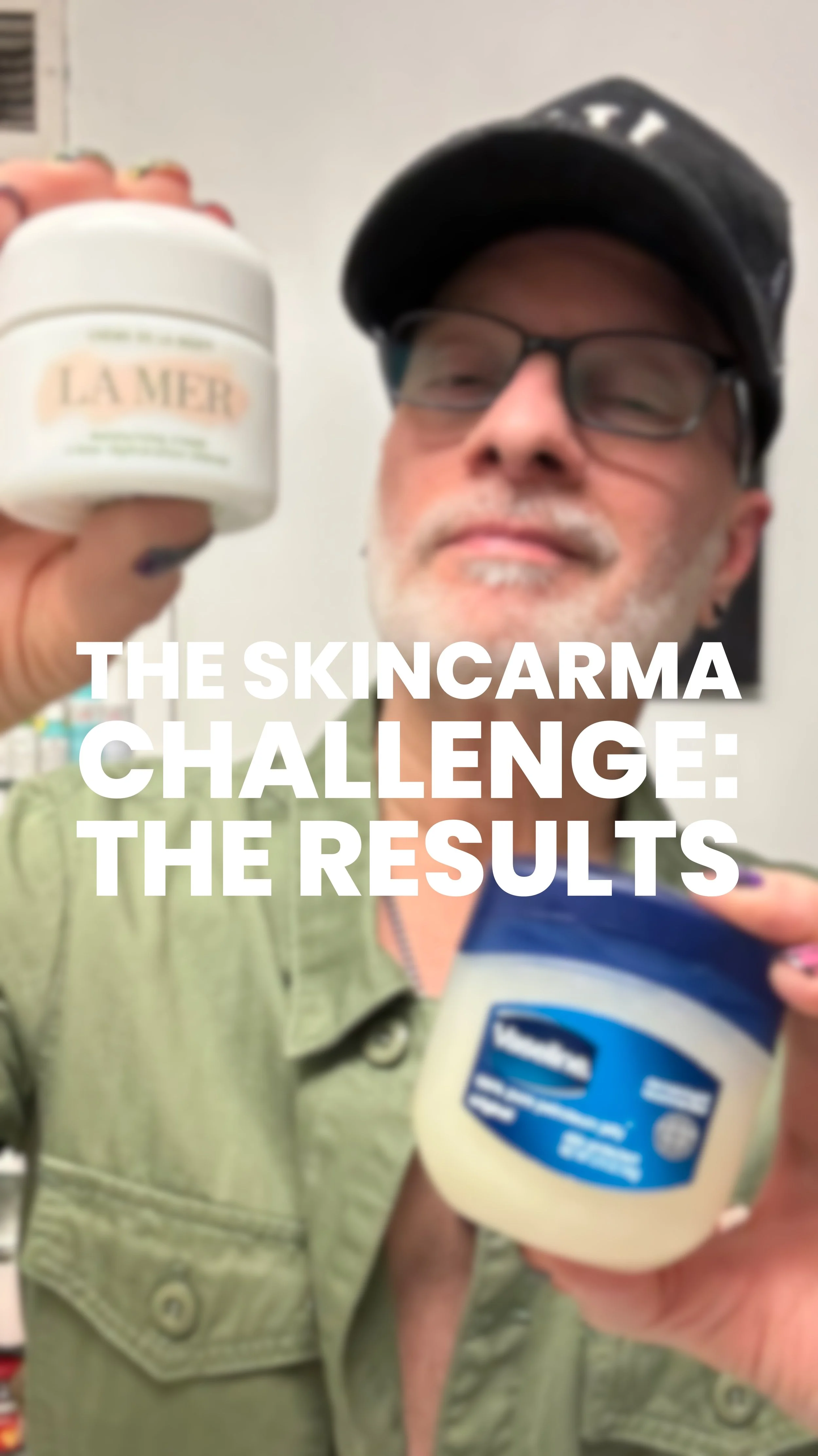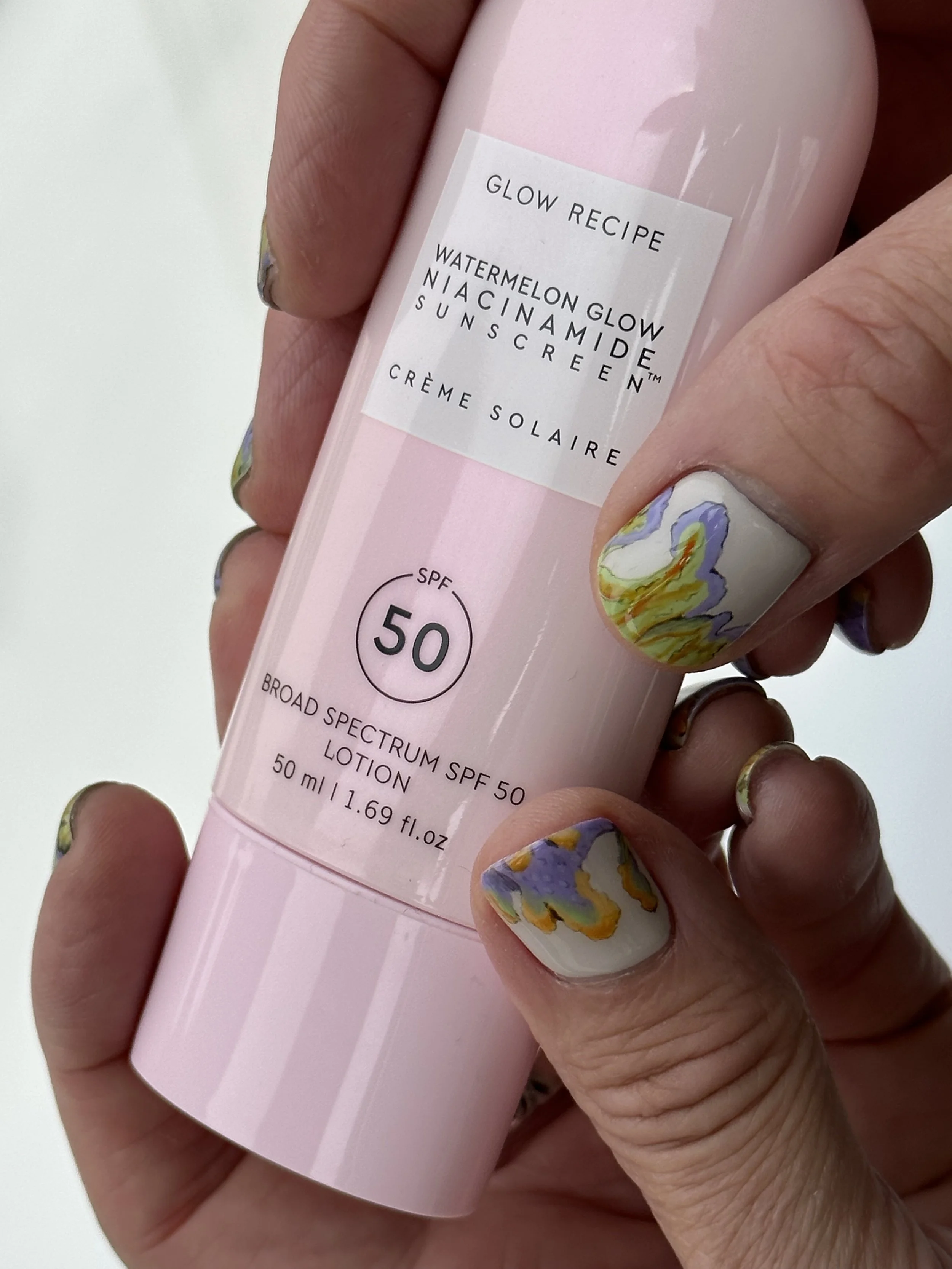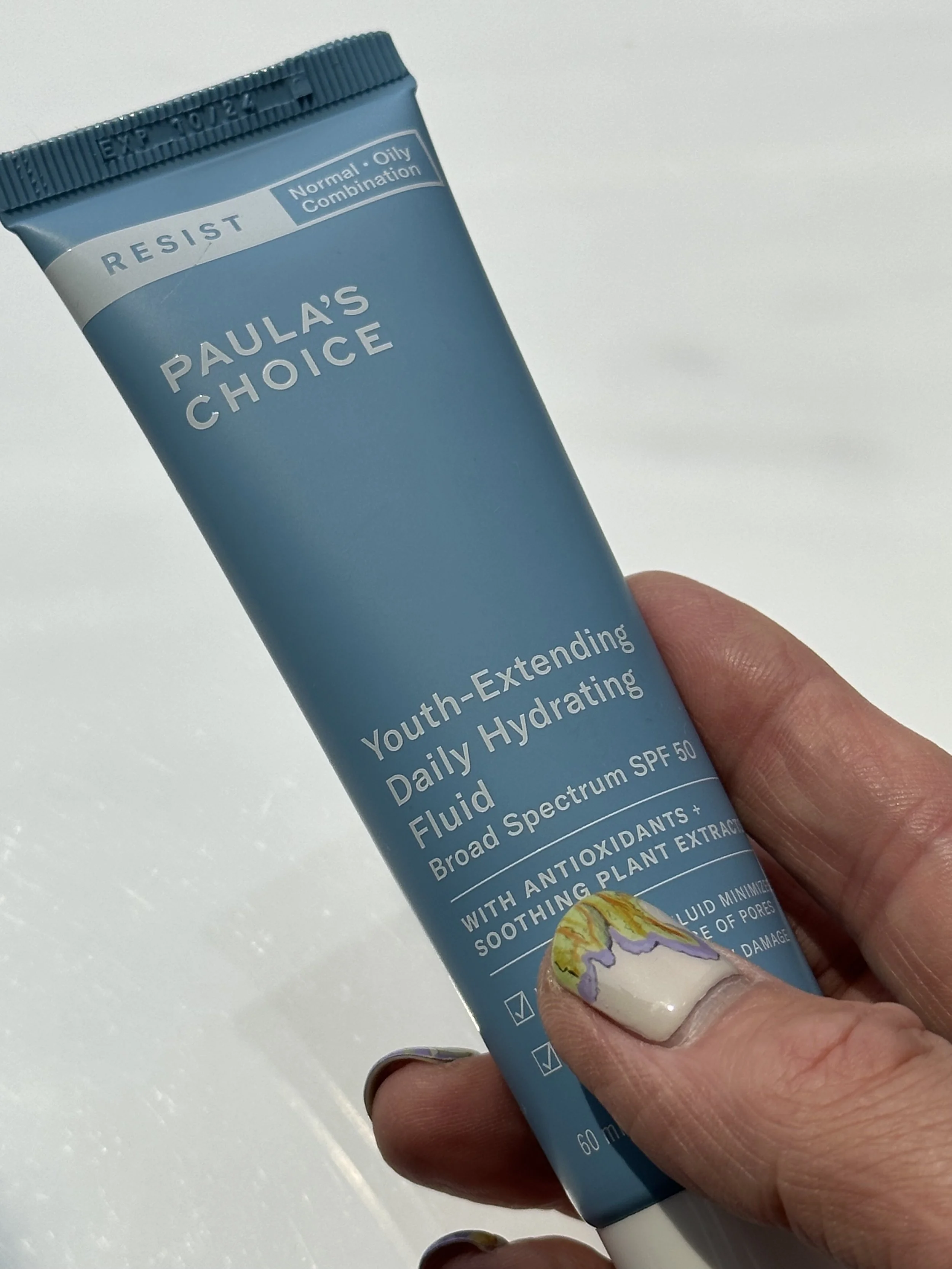PRODUCT REVIEW: KIEHL'S SINCE 1851 BETTER SCREEN UV SERUM SPF 50+ - What are collagen peptides? Which is better, chemical or mineral sunscreen? What is photoaging?
KIEHL'S SINCE 1851 BETTER SCREEN UV SERUM SPF 50+
I have no doubt that the beauty industry long ago constructed a fake marketing scheme to sell more expensive products: anti-aging skincare. To this day, anti-aging creams and serums are the most overpriced, over-hyped products in their line-ups.
What are claimed to be the best anti-aging creams for wrinkles are nothing more than basic moisturizers with great ads.
The prime example of this big beauty plot is La Mer’s iconic Crème de la Mer. At $200 for a one-ounce jar, it’s basically nothing more than an effective daily moisturizer.
Don’t believe me? Check out the product’s ingredient list here. It’s a lot of mineral oil, petrolatum and plant oils. There’s no Retinol. No peptides. No potent antioxidants. And certainly no sunscreen.
Since La Mer’s face cream was first introduced in the early 1960s, the beauty industry’s secret scam has rarely skipped a beat. In 2021 beauty’s biggest huckster today, the podiatrist Dr. Barbara Sturm, introduced her Super Anti-Aging Face Cream. Unless you believe that plumping skin with moisture is justifiably “anti-aging,” there’s nothing super about the $360 face cream that fights, prevents, or significantly improves the visible signs of aging.
The brand’s best product claim? That 100% of the 89 participants in a consumer perception study agreed their skin felt more hydrated. You can achieve that with a $10 moisturizer.
In the decades since La Mer first hit cosmetic department counters, rarely has a beauty brand marketed or even acknowledged a simple truth – that the most effective, important, even essential anti-aging product they offer is a basic facial sunscreen. That’s despite the fact that approximately 90% of premature skin aging can be attributed to photodamage, or sun damage.
At least brands continue to innovate with new, more pleasurable facial sunscreens! Every year, sunscreen textures and blendability improve. And the new Kiehl’s Better Screen UV Serum SPF 50+ Sunscreen is one of the most pleasurable and best facial sunscreens to launch this year. My detailed review is just below.
BEST SUNSCREENS FOR FACE
But first, about that wild assertion I made above about how unprotected UV exposure and subsequent photodamage (sun damage) are the cause of the vast majority of skin aging. Yes, the number is 90%!
There’s actually a scientific term for UV-induced skin aging: photoaging.
What is photoaging and is 90% of aging really caused by the sun?
Well, photoaging is the clinical description for the premature skin aging that occurs as a result of sun damage. Specifically, photoaging is caused by long-term exposure to ultraviolet (UV) radiation.
It is characterized by some of the most visible signs of aging, including wrinkles, fine lines, uneven pigmentation, and a loss of elasticity in the skin due to a breakdown of collagen. All of these are signs of photodamage. The simple fact is that wearing a facial sunscreen at the start of every day will help you prevent a whole lot of skin aging over the course of your life.
If you have a concern for signs of aging, you can bet that what you’re seeing was caused by sun damage – not some mysterious force you need to fight off with a light saber and a $200 face cream! And yes, according to The Skin Cancer Foundation, up to 90% of the signs of aging is due to the photoaging that results from unprotected sun exposure...
“Responsible for 90 percent of visible changes to the skin, photoaging is a direct result of cumulative sun damage you’ve been exposed to throughout your life.”
SEE YOUR NEW SUMMER SUNSCREEN IN ACTION…
Before I get into my detailed Kiehl’s Better Screen UV Serum SPF 50+ Sunscreen product review just below, I wanted to explore some of the most frequently asked questions about facial sunscreens, sun damage, and the technology behind Kiehl’s newest sunscreen for preventing and correcting signs of premature aging.
1. What are collagen peptides?
Collagen peptides are small fragments of collagen, a naturally occurring protein found in human and animal skin, cartilage and bones. Collagen peptides are formed through the breakdown of whole collagen, rendering them more bioavailable – better absorbed and more effective.
The benefits of collagen peptides for the skin are wide-ranging. Collagen peptides can help improve skin hydration and elasticity, helping to optimize skin health and support healthy skin functions. Used consistently and at active levels, collagen peptides can also support skin repair by supplementing collagen synthesis in the skin, leading to firmer, plumper skin – and ultimately a smoother, more youthful looking complexion.
Explore my picks of the best sunscreens for face on the blog here.
Sources: WebMD: Collagen Peptides - Uses, Side Effects, and More; Cleveland Clinic: Everything You Should Know About Collagen Peptides
2. Which is better, chemical or mineral sunscreen?
Generally mineral sunscreens are better for your skin, especially if you have sensitive skin and cannot tolerate harsher chemicals and actives.
However, unless your skin reacts adversely to the chemical UV filters found in chemical sunscreens, the most important factor in choosing a facial sunscreen is not whether it is chemical or mineral, but how it feels on your skin. Texture is the top priority! The most common reason that consumers give for not wearing a daily sunscreen for face is that it doesn’t feel comfortable on their skin.
Because mineral UV filters remain on the skin’s surface where they deflect UV rays away from the skin, they tend to be thicker and feel less elegant on the skin. And, due to the discernible white film they often leave on skin, they are not as versatile on darker skin tones.
My picks of the best mineral sunscreens include the Pavise Dynamic Age Defense SPF 30 Mineral Sunscreen, the Supergoop! Mineral Sheerscreen and the new Paula’s Choice Calm Barrier Protect Mineral Sunscreen SPF 30. Find my reviews of each on the blog here.
Ultimately, what’s important is that you find a facial sunscreen that you enjoy wearing so much that you wouldn’t think of skipping it. Whether it’s chemical or mineral doesn’t matter as much as the longterm damage not wearing a sunscreen at all will do to your skin.
Explore my picks of the best sunscreens for face on the blog here.
Sources: Skin Cancer Foundation: How to Choose the Best Sunscreen for Your Skin; Paula’s Choice: Your Guide to The Best Sunscreens for Sensitive Skin
3. What is photoaging?
Photoaging is the clinical term for sun-induced skin aging, specifically premature skin aging. Photoaging is caused by cumulative long-term exposure to ultraviolet (UV) radiation from the sun.
According to the Yale University School of Medicine, “Dermatologists refer to the damage the sun does to skin by several names, including photoaging, photodamage, solar damage, or sun damage. It happens when ultraviolet (UV) light hits skin unprotected by sunscreen, causing DNA changes at a cellular level. Because photodamage happens in the deepest layers of the skin – the dermis – it can take years before the damage surfaces and becomes visible.”
The Skin Cancer Foundation states that photoaging is “responsible for 90 percent of visible changes to the skin.” The inference behind this alarming assertion is that the majority of the signs of skin aging are easily preventable.
In short, the best strategy for tackling wrinkles, sagging skin, and hyperpigmentation is to prevent them from occurring in the first place – with consistent use of a daily facial sunscreen. By significantly minimizing photoaging, you can use effective anti-aging treatments like a Retinol face cream and a 20% Vitamin C serum to better treat existing signs of aging.
Explore my picks of the best sunscreens for face on the blog here.
Sources: The Skin Cancer Foundation: Photoaging: What You Need to Know About the Other Kind of Aging; Cleveland Clinic: Sun-damaged Skin (Photoaging); Yale Medicine: Photoaging (Sun Damage)
4. Can you reduce the signs of aging?
Yes, you can reduce the signs of aging. A potent anti-aging cream with Retinol is one of the best treatments for existing wrinkles, sagging skin, and hyperpigmentation. Powerful anti-aging serums with high concentrations of Niacinamide and Vitamin C are the most effective means of fading dark spots.
However, the best anti-aging cream is a basic facial sunscreen, which prevents signs of aging from forming in the first place. Used consistently, a sunscreen for face can prevent approximately 90% of visible changes to the skin, according to The Skin Cancer Foundation.
In fact, of the “10 Ways to Slow the Aging Process” laid out by WebMD, applying a daily sunscreen is the #1 tip! And the first four are related to sun exposure. Catch all ten tips here.
Explore my picks of the best sunscreens for face on the blog here and the best Retinol face creams and serums here.
Sources: The Skin Cancer Foundation: Photoaging: What You Need to Know About the Other Kind of Aging; WebMD: 10 Ways to Slow the Aging Process
5. Product Review
During the 7+ years that I worked in-house at Kiehl’s as the company’s first-ever copywriter, there were many maxims handed down by the founding Morse family. One of my favorites – and one which holds true with me today – is that it is essential to wear sunscreen “even on cloudy, seemingly sunless days.”
That tidbit of Kiehl’s wisdom about the importance of sunscreen dates back decades, likely to the 70s or 80s. As a cosmetics department manager in my early 20s, I had already embraced the indispensable benefits of a facial sunscreen when I got to Kiehl’s. But the founders’ message affirmed and reinforced it. In fact, I have never skipped a beat; I’ve applied a facial sunscreen every single morning since.
Today, I share that with others almost daily – with anyone who will listen!
Given the fact that most signs of skin aging are preventable with the consistent use of a daily facial sunscreen, it’s essential to find one that you love so much you would never skip it.
I have several daily sunscreens that I love, most notably the Paula’s Choice Youth-Extending Daily Hydrating Fluid SPF 50 Sunscreen and CeraVe’s Hydrating Sheer Sunscreen SPF 30 for Face and Body.
The new Kiehl’s Better Screen UV Serum SPF 50+ Sunscreen has fast become a fave since I first got my hands on it several weeks ago. It’s light, comfortable, melts right in – and feels like I’m applying a milky facial serum to my skin.
Kiehl’s Better Screen UV Serum SPF 50+ Sunscreen is a chemical sunscreen formulated with Avobenzone, Homosalate, Octisalate, and Octocrylene. The milky texture is perfect for a hot, summer day when the last thing you want is anything heavy on your face – especially a greasy sunscreen.
While Kiehl’s doesn’t claim that the Better Screen UV Serum is oil-free, it’s relatively free of oils. A close look at the INCI reveals that the lone ingredient that would be classified as an oil is Sunflower Seed Wax – at a very low concentration. Again, not oil free but damn close.
While we’re on the subject of the product’s ingredient list…
On the product label, website and in marketing messaging, Kiehl’s highlights what it terms as “collagen peptide” – singular. There’s actually nothing in the INCI that directly alludes to a collagen peptide, though there are two peptides called out in the formula: Palmitoyl Tripeptide-1 and Palmitoyl Tetrapeptide-7 – both legitimate anti-aging peptides.
But they also happen to be the last two ingredients in the entire ingredient list, making them relatively insignificant.
And I’m okay with that. Remember what I said about finding a sunscreen you love so much you would never skip it? Well, it’s very likely that if you try Kiehl’s Better Screen UV Serum SPF 50+ Sunscreen you will love it.
That’s the most important – and I’d argue only – factor when assessing a facial sunscreen, assuming it’s well-formulated. Does it feel great on your skin? Does it even feel like nothing on your skin? Do you love applying it each morning?
With the Kiehl’s Better Screen UV Serum, the answer to those questions is likely to be yes!
6. Pros & Cons
What I like about it: The Kiehl’s Better Screen UV Serum SPF 50+ Sunscreen is one of the lightest and most pleasurable facial sunscreens to launch this year. It blends in well and feels like nothing on your skin, making it very likely that you’ll use it consistently. That’s the most important thing of all.
What I don’t like about it: That collagen peptide thing is more marketing than anything else. So, more collagen peptides (plural!) would be nice.
Who it’s for: All skin types, even sensitive skin. (It’s fragrance free.)
SHOP THE BLOG: Want to try it for yourself? Purchase the Kiehl’s Better Screen UV Serum SPF 50+ Sunscreen for $42 here.
FIND OUT WHICH SERUM PERFORMED BETTER – AND BY HOW MUCH!
The Ingredient List of the Kiehl’s Better Screen UV Serum SPF 50+ Sunscreen:
 sunsc, Homosalate (7%) sunsc, Octisalate (5%) sunsc 0 0, Octocrylene (7%) sunsc
sunsc, Homosalate (7%) sunsc, Octisalate (5%) sunsc 0 0, Octocrylene (7%) sunsc sii|h 0 0, C15-19 Alkane emo, Propanediol solv|h, C12-22 Alkyl Acrylate/Hydroxyethylacrylate Copolymer vc, Tocopherol
sii|h 0 0, C15-19 Alkane emo, Propanediol solv|h, C12-22 Alkyl Acrylate/Hydroxyethylacrylate Copolymer vc, Tocopherol  aox 0-3 0-3, Sodium Stearoyl Glutamate emu|surf, Butylene Glycol h|solv 0 1, Cetearyl Alcohol emo|vc|emu|surf 1 2, Sclerotium Gum vc, Hydroxyacetophenone aox, Caprylyl Glycol h|emo, Sodium Starch Octenylsuccinate vc, Glyceryl Stearate emo|emu 0 1-2, Jojoba Esters so|emo|h, Helianthus Annuus (Sunflower) Seed Wax emo, Hydroxypropyl Starch Phosphate vc, Trisodium Ethylenediamine Disuccinate chel, Carbomer vc 0 1, Sodium Lactate
aox 0-3 0-3, Sodium Stearoyl Glutamate emu|surf, Butylene Glycol h|solv 0 1, Cetearyl Alcohol emo|vc|emu|surf 1 2, Sclerotium Gum vc, Hydroxyacetophenone aox, Caprylyl Glycol h|emo, Sodium Starch Octenylsuccinate vc, Glyceryl Stearate emo|emu 0 1-2, Jojoba Esters so|emo|h, Helianthus Annuus (Sunflower) Seed Wax emo, Hydroxypropyl Starch Phosphate vc, Trisodium Ethylenediamine Disuccinate chel, Carbomer vc 0 1, Sodium Lactate  buff|h, Sodium Hydroxide buff, Polysorbate 20 emu|surf 0 0, Polyglycerin-3 h, Palmitoyl Tripeptide-1
buff|h, Sodium Hydroxide buff, Polysorbate 20 emu|surf 0 0, Polyglycerin-3 h, Palmitoyl Tripeptide-1  cci, Palmitoyl Tetrapeptide-7
cci, Palmitoyl Tetrapeptide-7  cci
cciIS IT REALLY A SCAM?
Find out on my TikTok channel.
WATCH MY VIDEO REVIEW
THE BEST NIACINAMIDE SERUMS FOR CLOGGED PORES AND A BRIGHTER COMPLEXION
ON MY YOUTUBE CHANNEL HERE
WATCH MY VIDEO REVIEW OF
SKINCARE HACKS: GLYCOLIC ACID IS THE NATURAL DEODORANT THAT WORKS!
ON MY YOUTUBE CHANNEL HERE
WATCH MY VIDEO REVIEW OF
MY FAVORITE HUMECTANT SERUMS FROM PAULA'S CHOICE, THE INKEY LIST, GHOST DEMOCRACY AND MORE
ON MY YOUTUBE CHANNEL HERE
WATCH MY VIDEO REVIEW
COOL CLEAN FACIAL SUNSCREENS TO KEEP US SAFE AND SMILING IN THE SUN!
ON MY YOUTUBE CHANNEL HERE
WATCH MY VIDEO REVIEW
THE OPULUS BEAUTY LABS RETINOL SYSTEM – THE COOLEST RETINOL INNOVATION I’VE EVER SEEN
ON MY YOUTUBE CHANNEL HERE
WATCH MY VIDEO REVIEW OF
MY WINTER SKIN SAVIOR: SKINFIX BARRIER+ LIPID REPLENISHING SKINCARE
ON MY YOUTUBE CHANNEL HERE
WATCH MY VIDEO REVIEW
A COMPLETE K-BEAUTY ROUTINE WITH THE BEST FACIAL SKINCARE FROM PURITO, COSRX, MISSHA & MORE!
ON MY YOUTUBE CHANNEL HERE
WATCH MY VIDEO REVIEW
THE YEAR’S BEST VITAMIN C SERUMS WITH PAULA'S CHOICE, SUNDAY RILEY, THE INKEY LIST AND MORE!
ON MY YOUTUBE CHANNEL HERE
WATCH MY VIDEO REVIEW OF
A SELFCARE SUNDAY NOT FOR THE FAINT OF HEART – WITH THE PAULA’S CHOICE 25% AHA PEEL!
ON MY YOUTUBE CHANNEL HERE



